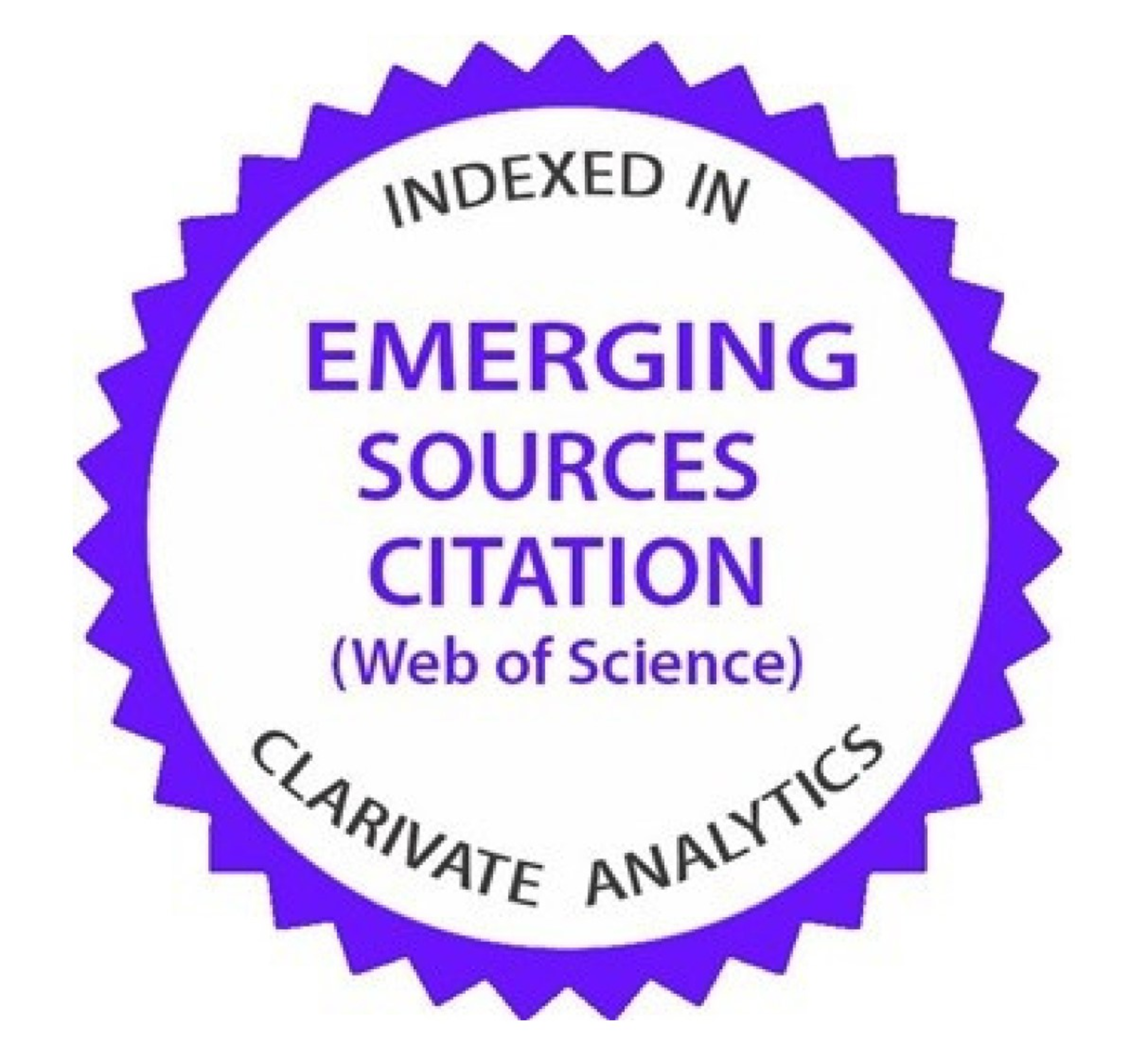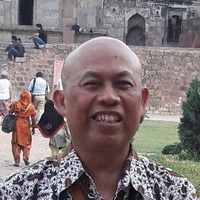From tradition to innovation: Examining Ifugao’s local weave products as One Town One Product – Next generation
Downloads
The traditional weaving industry in Lagawe, Ifugao, Philippines, is a vital cultural and economic asset rooted in indigenous knowledge and craftsmanship. However, the sustainability of these enterprises in the modern market context remains a pressing concern. This study aims to determine the current condition of traditional weaving businesses in Lagawe, Ifugao, using the One Town One Product—Next Generation criteria. Owners of traditional weaving businesses that were purposively selected in Lagawe, Ifugao, were interviewed in 2023. Using thematic and inductive analysis, findings revealed that handwoven products are valued for their cultural authenticity, craftsmanship, and durability. Weavers from Kiangan and Hingyon provide quality materials, ensuring the integrity of the weave. Consumers appreciate the uniqueness, symbolism, and artisanal quality, which enhance personal identity and cultural pride. However, the sector faces challenges in branding, product innovation, and packaging. Traditional designs are mostly limited to garments, restricting broader market appeal, while non-traditional items like bags show minimal design evolution, reducing competitiveness. Packaging lacks labeling, including care instructions and cultural context, weakening branding and customer education. Quality control depends largely on raw materials and weaving techniques, but durability also relies on customer handling. Participants highlighted variability in longevity, suggesting the need for consumer education. Innovation that balances modernization with cultural preservation is essential for market sustainability. Overall, the traditional weaving industry in Ifugao showcases admirable product quality rooted in heritage. However, it must address gaps in market-oriented practices and product development to ensure long-term sustainability and relevance in a competitive and evolving global market.
Akim U (2024) Utilizing social media platforms for improving market access for agricultural products. Journal of Research in Business and Management 12 (8):57-63. https://doi.org/10.35629/300212085763.
Asinyo BK, Howard EK, & Seidu RK (2021) Weaving traditions of Daboya and Yendi communities in Northern Ghana. Journal of Arts and Humanities 10 (4):39-48. https://doi.org/10.18533/jah.v10i04.2069.
Ausat M & Suherlan S (2021) Obstacles and solutions of MSMEs in electronic commerce during the COVID-19 pandemic: Evidence from Indonesia. BASKARA: Journal of Business and Entrepreneurship 4 (1):11-19. https://jurnal.umj.ac.id/index.php/baskara/article/view/10318.
Azis K, Kurniawan F, & Rifki I (2024) Implementasi aplikasi keuangan web PT Zathco. Jurnal Ilmiah Teknik Informatika dan Komunikasi 4 (1):194-211. https://doi.org/10.55606/juitik.v4i1.769.
Bardhan A & Bhattacharya A (2022) Role of traditional crafts in sustainable development and building community resilience: Case stories from India. Culture, Society, Economy, Politics 2 (1):38-50. https://doi.org/10.2478/csep-2022-0004.
Baten RH, Saha S, Al Abbasi A, & Akter R (2020) The technical inefficiency of the handloom weaving industry: A study in Tangail Sadar. International Journal of Humanities and Social Science Invention 9 (9):46-52.
Batsakis G, Konara P, & Theoharakis V (2023) Digital sales channels and the relationship between product and international diversification: Evidence from going digital retail MNEs. Global Strategy Journal 13 (4):830-856. https://doi.org/10.1002/gsj.1465.
Boccella N & Salerno I (2016) Creative economy, cultural industries, and local development. Procedia— Social and Behavioral Sciences 223: 291-296. https://doi.org/10.1016/j.sbspro.2016.05.370.
British Council (2020) Crafting futures – Sustaining handloom weaving in the Philippines. https://www.britishcouncil.ph/sites/default/files/british_council_-_crafting_futures_-_full_report.pdf.
Busamatary R & Khawzawl T (2024) Handloom and construction of identity: A study among the Bodo women weavers of Assam. ShodhKosh: Journal of Visual and Performing Arts 5 (1):349-360. https://doi.org/10.29121/shodhkosh.v5.i1.2024.786.
Campbell S, Greenwood M, Prior S, Shearer T, Walkem K, Young S, Bywaters D, & Walker K (2020) Purposive sampling: Complex or simple? Research case examples. Journal of Research in Nursing 25 (8):652-661. https://doi.org/10.1177/1744987120927206.
Centillas J, Inocian R, Amper R, & Bacalso J (2023) Unveiling the art and crafts of raffia weaving: A cultural theory and instructional model development. Culture and Psychology 30 (4):983-1016. http://dx.doi.org/10.1177/1354067X231201390.
Chanasda Chullasthira CJ (2017) Mai Taem Mi: From local wisdom to the innovation of Tie-Dye woven fabric production. Journal of Fine and Applied Arts Khon Kaen University 9 (1):319-340. retrieved from https://so02.tcithaijo.org/index.php/fakku/article/view/93327.
Chernet Y & Ba O (2020) Weaving and its socio-cultural values in Ethiopia: A review. Asian Journal of Agricultural Extension, Economics & Sociology 37 (4):1-11. https://doi.org/10.9734/ajaees/2019/v37i430289.
De Jesus Icasiano CE (2017) INABEL: Philippine textile from the Ilocos region. Humanities Diliman: A Philippine Journal of Humanities 14 (1):16-32.
Deighton J, Melo C, & Moorman C (2021) Marketing thinking and doing. American Marketing Association 85 (1):1-6. https://doi.org/10.1177/0022242920977093.
Department of Trade and Industry (2022) One town, one product – Philippines.
Divyanshi, Kumar S, & Singh V (2022) Constraints faced by loom weavers related to production and marketing of weaved products in Bhagalpur District of Bihar. Asian Journal of Agricultural Extension, Economics and Sociology 40 (9):249-253.
Fitri AP, Hisan K, Febrianti Z, Jalisna R, & Wulan FA (2024) Peran media sosial dalam mempromosikan ekonomi kreatif berbasis tenun di Desa Sukarara, Kabupaten Lombok Tengah. Jurnal Transformasi Bisnis Digital 1 (4):36-48. https://doi.org/10.61132/jutrabidi.v1i4.216.
Glover D & Stone GD (2018) Heirloom rice in Ifugao: An ‘anti-commodity’ in commodification. TheJournal of Peasant Studies 45 (4):776-804. https://doi.org/10.1080/03066150.2017.1284062.
Gogoi N, Neog P, & Saikia D (2020) Development of diversified hand-woven furnishing products with amalgamated Assamese woven motifs and assessment of consumer preference. Asian Journal of Home Science 15 (2):281-288. https://doi.org/10.15740/has/ajhs/15.2/281-288.
Gopura S & Wickramasinghe A (2023) Dreams of weaving: Creative practice-led approach to handloom product development in Sri Lanka using artisans’ socio-emotional identities. Fashion Practice 15 (2):208-229. https://doi.org/10.1080/17569370.2022.2127537.
Hasmawati H, Aponno C, Siahaya S, & Usmany M (2023) Preparation of simple financial statements for MSME using Microsoft Excel accounting application (A case study on the Mawar Ikat Weaving Group in Tawiri Negeri). Brilliant International Journal of Management and Tourism 3 (3):52-62.
He B, Gupta V, & Mirchandani P (2021) Online selling through O2O platform or on your own? Strategic implications for local Brick-and-Mortar stores. Omega 103: 102424. https://doi.org/10.1016/j.omega.2021.102424.
Hegde M & Ramaiah M (2024) A study on rejuvenation of traditional handloom weaving. Recent Trends in Textile & Fashion 2k24.
Hidayani N (2024) Cultural heritage preservation: The art of traditional weaving is applied not only in clothing. Jurnal Impresi Indonesia 3 (2):128-138. https://doi.org/10.58344/jii.v3i2.4636.
Hossain MT, Shahid MA, Limon MGM, Hossain I, & Mahmud N (2024) Techniques, applications, and challenges in textiles for a sustainable future. Journal of Open Innovation: Technology, Market, and Complexity 10 (1):100230. https://doi.org/10.1016/j.joitmc.2024.100230.
Imapi SD, Tindungan F, Napadawan L, & Malinao CWM (2022) Repeat purchase intentions: Exploring the perceived values of locally-made hand-woven bags in Lagawe, Ifugao, Philippines. International Journal of Entrepreneurship and Business Development 5 (3):536-544. https://doi.org/10.29138/ijebd.v5i3.1853.
Inovero J, Salvador-Amores A, & Pagaduan J (2021) Physiological aspects of Cordillera weaving in the Philippines. Philippine Journal of Science 150 (5):1061-1067.
Khakhlari P (2020) Silk products and marketing strategy of a weaving industry in Assam. Humanities & Social Sciences Reviews 8 (2):91-101. https://doi.org/10.18510/hssr.2020.8212.
Kiarie E (2024) Cultural heritage preservation in the face of globalization. International Journal of Humanity and Social Sciences 3 (3):1-14. https://doi.org/10.47941/ijhss.2081.
Laszczka A & Prządka-Giersz P (2020) Tapestry-woven textiles from Castillo de Huarmey, Peru and the Wari-Huarmey textile tradition. Estudios Latinoamericanos 40: 141-157. https://doi.org/10.36447/Estudios2020.v40.art5.
Lawani K, Hare B, Tong MKL, & Cameron I (2023) Exploring mental health challenges and implications for construction safety. Journal of Engineering, Design and Technology. https://doi.org/10.1108/JEDT-07-2023-0327
Malbog R, Co F, Comia C, Crisostomo C, Kuare K, & Dizon A (2018) Abel: The Ilocano weaving industry amidst globalization. The Yale Review of International Studies, Yale’s Undergraduate Global Affairs Journal. https://yris.yira.org/column/abel-the-ilocano-weaving-industry-amidstglobalization
Malinao CW (2021) Are people in Ifugao, Philippines entrepreneurial? Shedding light on entrepreneurial characteristics, motivations, challenges, and intentions among Ifugao. International Journal of Entrepreneurship, Business and Creative Economy 1 (2):45-53. https://doi.org/10.31098/ijebce.v1i2.517.
Malinao CW (2022) Evaluation of the impact of some factors on coffee producers towards sustainable rural development in Lagawe, Ifugao of Philippines. Universal Journal of Agricultural Research 10 (6):595-609. https://doi.org/10.13189/ujar.2022.100601.
Mamidipudi A & Bijiker W (2018) Innovation in Indian handloom weaving. Technology and Culture 59 (3):509-545. http://dx.doi.org/10.1353/tech.2018.0058.
Mirajiani M, Wibowo A, Sumantri AT, Kumar MK, & Nurhidayati I (2024) Strategies in enhancing consumer interest in Baduy weaving crafts through Business Model Canvas to improve the economic resilience of Baduy indigenous community. International Journal of Research and Innovation in Social Science 8 (11):1977-1990. https://doi.org/10.47772/ijriss.2024.8110156.
Raskin L, Sira O, & Karpenko V (2019) Transportation management in a distributed logistic consumption system under uncertainty conditions. Mathematical Sciences 4: 82-90. https://doi.org/10.21303/2461-4262.2019.00936.
Shrivastava A (2020) Weaving sustainability in Indian higher education system. Emerald Emerging Markets Case Studies 10 (3). https://doi.org/10.1108/EEMCS-01-2020-0015.
Soodsung I (2016) Design and development of working women’s uniform techniques with pleated from woven fabrics in Dok-Peep Phitsanulok. Art and Architecture Journal Naresuan University 7 (2):170-179.
Sore AD & Bobi Y (2024) Strategi pemasaran anyaman lidi berbasis kearifan lokal untuk pemberdayaan ekonomi masyarakat Desa Tapang Semada. Jurnal Pendidikan Ekonomi (JURKAMI) 9 (3):776-787. https://doi.org/10.31932/jpe.v9i3.3790.
Subedi KR (2021) Determining the sample in qualitative research. Scholars’ Journal 4 (1):1-13. https://doi.org/10.3126/scholars.v4i1.42457.
Sumarmi S, Anindyasari VR, Adhiany L, Lestari FJE, Fauziana A, & Tentua MN (2023) Digital marketing: Solution for market expansion of MSME products. Dinamisia: Jurnal Pengabdian Kepada Masyarakat 7 (6):1540-1546. https://doi.org/10.31849/dinamisia.v7i6.15854.
Telepneva O, Yankovska V, & Kononov I (2021) Evolution of production and trade-distribution logistics of consumer goods. Market Infrastructure. https://doi.org/10.32843/infrastruct61-28.
Vilbar H & Bronda H (2019) Weaving industry of Barangay Sapal, San Lorenzo, Guimaras: Bases for enhancement program. International Journal of Interdisciplinary Research and Innovations 7 (3):169-180.
Wanjiru B & George G (2015) Analysis of Organic Growth Strategies on Performance of small and medium sized Enterprises: Case of Thika Sub-County, Kenya. European Journal of Business and Management 7 (5):180-205.
Yang Y, Shafi M, Song X, & Yang R (2018) Preservation of cultural heritage embodied in traditional crafts in the developing countries: A case study of Pakistani handicraft industry. Sustainability, 10 (1336):1-18. https://doi.org/10.3390/su10051336.
Yani A, Suparwa D, & Hamka (2023) Product and service innovation strategies to expand MSME markets. Journal of Contemporary Administration and Management 1 (3):163-169. https://doi.org/10.61100/adman.v1i3.67.

This work is licensed under a Creative Commons Attribution-NonCommercial-ShareAlike 4.0 International License.
Copyright of this journal is possession of Editorial Board and Journal Manager, by the knowledge of the author, while the moral right of the publication belongs to the author.
The formal legal aspect of journal publication accessibility refers to Creative Commons Attribution-NonCommercial-ShareAlike (CC BY-NC-SA), implies that publication can be used for non-commercial purposes in its original form (cannot be modified).
Every publication (printed/electronic) are open access for educational purposes, research, and library. Other than the aims mentioned above, the editorial board is not responsible for copyright violation.
















